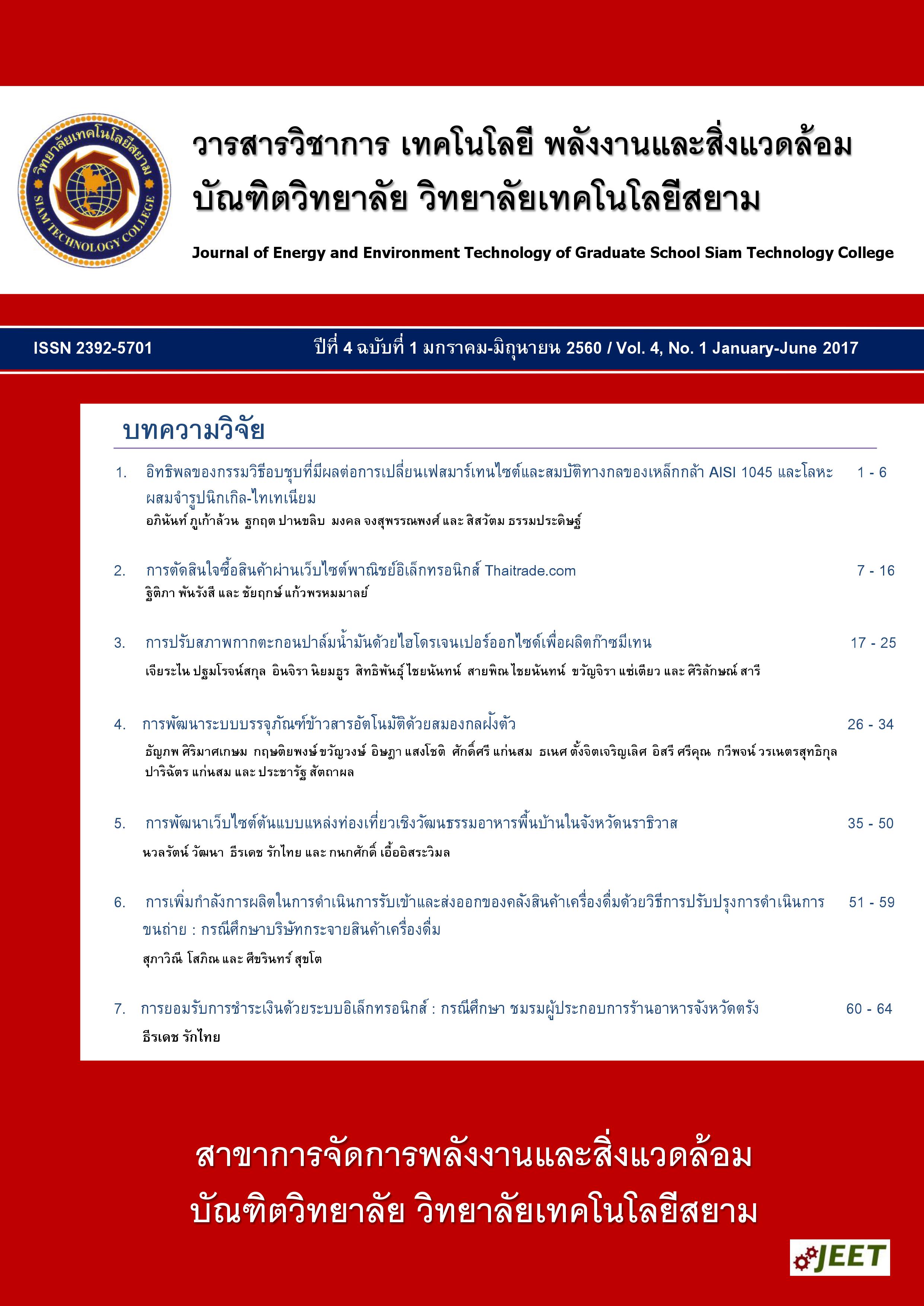influence of quenching method on the martensitic transformation and Mechanical Properties of AISI 1045 Carbon Steel and NiTi Shape Memory Alloys
Main Article Content
Abstract
This study aims to investigate the influence of quenching method on the martensitic transformation and mechanical properties of AISI 1045 carbon steel and NiTi shape memory alloys. Chemical composition of AISI 1045 sample was analysed by spectroscopy, whilst NiTi sample was analysed by SEM-EDS technique. Martensitic transformation was induced by quenching after being heat treated at 800oC for 60 min. Quenching methods were divided into two groups: oil quenching, and water quenching. Microstructure and mechanical properties of the samples were characterized by optical microscopy and hardness test, respectively. The results show that quenching method has significantly affected the martensitic grain size of AISI 1045 samples, but not NiTi samples. The water quenched samples tend to exhibit smaller grain size than the oil quenched ones due to the faster cooling rate. Therefore, it consequently affected hardness of the samples after quenching. It is expected that this could be due to the difference in martensitic crystal structure of each materials, which responds differently to the changes in cooling rate during quenching.
Article Details
เนื้อหาและข่อมูลในบทความที่ลงตีพิมพ์ในวารสารวิชาการ เทคโนโลยี พลังงาน และสิ่งแวดล้อม บัณฑิตวิทยาลัย วิทยาลัยเทคโนโลยีสยาม ถือเป็นข้อคิดเห็นและความรับผิดชอบของผู้เขียนบทความโดยตรง ซึ่งกองบรรณาธิการวารสารไม่จำเป็นต้องเห็นด้วย หรือว่าร่วมรับผิดชอบใด ๆ
บทความ ข้อมูล เนื้อหา รูปภาพ ฯลฯ ที่ได้รับการตีพิมพ์ในวารสารวิชาการ เทคโนโลยี พลังงาน และสิ่งแวดล้อม บัณฑิตวิทยาลัย วิทยาลัยเทคโนโลยีสยาม ถือเป็นลิขสิทธิ์ของวารสารวิชาการ เทคโนโลยี พลังงาน และสิ่งแวดล้อม บัณฑิตวิทยาลัย วิทยาลัยเทคโนโลยีสยาม หากบุคคล หรือหน่วยงานใดต้องการนำทั้งหมด หรือส่วนหนึ่งส่วนใดไปเผยแพร่ต่อ หรือเพื่อกระทำการใด ๆ จะต้องได้รับอนุญาต เป็นลายลักษณ์อักษรจากวารสารวิชาการ เทคโนโลยี พลังงาน และสิ่งแวดล้อม บัณฑิตวิทยาลัย วิทยาลัยเทคโนโลยีสยาม เท่านั้น
References
[2] Chitty, J.A.; Pertuz, A.; Hintermann, H.; Puchi, E.S. (1999), “Influence of electroless nickel-phosphorus deposits on corrosion-fatigue life of notched and un-notched samples of an AISI 1045 steel” Journal of Materials Engineering and Performance,Vol. 8, pp. 83-86.
[3] Totten, G.E. (2007), Steel Heat Treatment Handbook-Equipment and Process Design, 2nd Ed., Taylor and Francis
[4] แม้น อมรสิทธิ์, สมชยั อคัรทวิา และ ธรรมนูญ อุดมแมน้ (2551), วสัดุวศิวกรรม, สา นกัพมิพท์อ้ป
[5] Otsuka K, Wayman CM. (1998), Shape memory materials, Cambridge University
[6] ASTM Designation: E 407-99, pp.1-21.
[7] Phukaoluan A., Khantachawana A., Kaewtatip P., Dechkunakorn S., Anuwongnukroh N., Santiwong P. and Kajornchaiyakul J (2011), “Property improvement of TiNi by Cu addition for Orthodontics Applications”, Applied Mechanics and Materials, Vol.87, pp.95-100.
[8] AZoM (2012), AISI 1045 Medium CarbonSteel,AZOMATERIALS,URL:http://www.azom.com/article. aspx?ArticleID=6130, access on 15/05/2017

